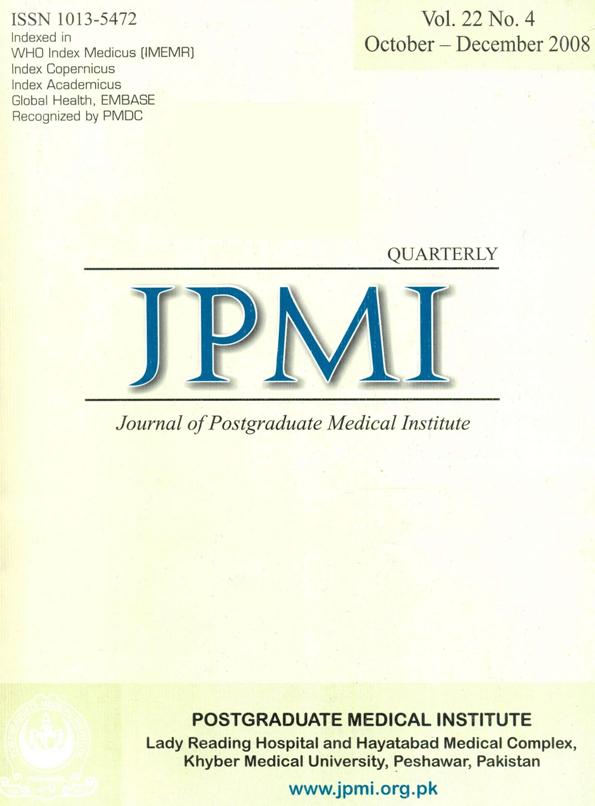MANAGEMENT OF TRAUMATIC DIAPHRAGMATIC HERNIAS
Main Article Content
Abstract
Objective: Experience with traumatic diaphragmatic hernias was reviewed to identify pitfalls in the
diagnosis and treatment of this injury.
Material and Methods: A Computerized chart review of all patients admitted to the Thoracic Trauma
unit with traumatic diaphragmatic hernias was undertaken for the period of January 2001 to December
2007.
Results: We retrospectively analyzed 18 patients who presented between January 2001 and December
2007 with traumatic diaphragmatic hernia, caused by blunt injuries in 15 (83.3%) and by penetrating
injuries in 3 (16.7%). Average age of the patients was 30 years and the female to male ratio was 4:14.
Traumatic diaphragmatic hernia was right-sided in 5 (27.8%) patients and left-sided in 13 (72.2%). The
diagnosis was made by chest X-ray, thorax and upper abdominal computed tomography, and upper
gastrointestinal contrast study. The most common herniated organs were omentum (n=11), stomach (n=10),
spleen and colon (n=9), and liver (n=2). Sixteen diaphragmatic injuries were repaired primarily, and two
were repaired using a prolene mesh graft. The mortality rate was 5.5% (n=1). Chest pain, abdominal pain,
or dyspnea were the predominant symptoms.
Conclusion: Careful history, use of good diagnostic tool, best approach and meticulous repair are
important because of the frequency and severity of associated injuries.
Article Details
Work published in JPMI is licensed under a
Creative Commons Attribution-NonCommercial 2.0 Generic License.
Authors are permitted and encouraged to post their work online (e.g., in institutional repositories or on their website) prior to and during the submission process, as it can lead to productive exchanges, as well as earlier and greater citation of published work.


